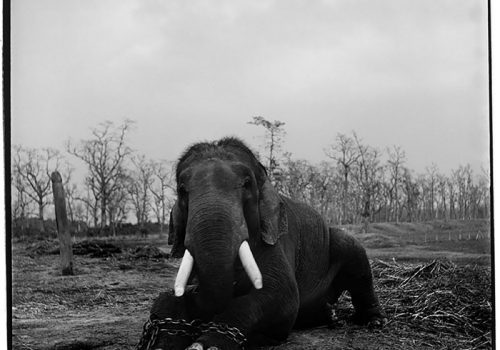From the pristine jungles of Cambodia to the great national parks of India and Nepal, Asian wildlife is plundered on an unprecedented scale. Each year, an estimated 30,000 primates, 5 million birds, 10 million skins of reptile and 500 million tropical fish are traded.
For more than a decade, Patrick Brown has been tracking the illegal trafficking of endangered animals in Asia, photographing his merchants, stocks, routes and markets. It is a massive smuggling industry, where often only poachers are denounced while they are just the tip of an illegal, complex and highly profitable trade.
According to ancient customs, some animal parts have “magic” properties. Some people believe, for example, that eating the flesh of a tiger will make them stronger.
Rhino horns have no medicinal properties, but myths about their beneficial effects on health and their aphrodisiac properties have increased their value tenfold to exceed that of gold.
The value of this market is impossible to determine, but experts estimate it would be around $ 10 billion a year. In India, a poacher who kills a rhinoceros to collect the horn receives $ 350. The latter sells for $ 1,000 in a neighboring town. When it reaches Hong Kong, Beijing or the Middle East, it is worth $ 370,000. Tiger bones are worth up to $ 700 per kilo.
The global and illegal wildlife trade has doubled since the 1990s, the evidence is overwhelming: more than 100 million sharks are killed each year, there are more Bengali tigers in Texas than in the Bay of Bengal and we observe even a mutation of the species in elephants who, in response to poaching, have shorter tusks or even are born without defenses.
“For years, I traveled across Asia to document the devastating impact of wildlife trafficking. I witnessed how the rarest species on our planet are hunted, trapped and slaughtered to fuel a global black market. Investigating trade in its depths is a shocking story of cruelty, crime and human greed. Its tentacles extend throughout the world, from remote Asian forests to traffic centers in Beijing, Bangkok, London, Tokyo and New York.
Unfortunately, there is still a long way to go as this trade is flourishing. Nevertheless, a coordinated political response is finally being organized: an extraordinary global movement brings together people from all walks of life to save the most endangered animal species before it is too late. I hope these efforts will not be in vain. ”
Patrick Brown
For more than twenty years the association Pour Que L’Esprit Vive with the FAIT & CAUSE Gallery and the website SOPHOT.com is dedicated to social and environmental issues with the aim of raising public awareness and changing attitudes.
Also we can not exclude from our fights that in favor of the animals. That’s why we present the exhibition CRIME AGAINST ANIMALITY. To proclaim the duty of justice to “those” who can not defend themselves ( from men) and whose existence is increasingly threatened!
It must be said and repeated: it is a real shame for humanity that in the 21st century these sentient beings (like us) animals, can continue to be taken for mere goods, used to satisfy our whims, our greed, ourcaprices and our fantasies!
Nothing justifies the mistreatment, the suffering and the cruelties to which they are subjected.
We are therefore happy to be able to show the work “Trading to extinction” of Patrick Brown denouncing one of the most barbaric aspects of crime against animals. May we, with this exhibition, advance the animal cause!
Christian Predovic
Book
TRADING TO EXTINCTION
By Patrick Brown and Ben Davies
Dewi Lewis Publishing (2014)
English language
Exhibition
Patrick Brown – Crime Against Animality: Trading to Extinction
March 20 to April 27
Fait & Cause Gallery
58 rue Quincampoix
75004 Paris
















